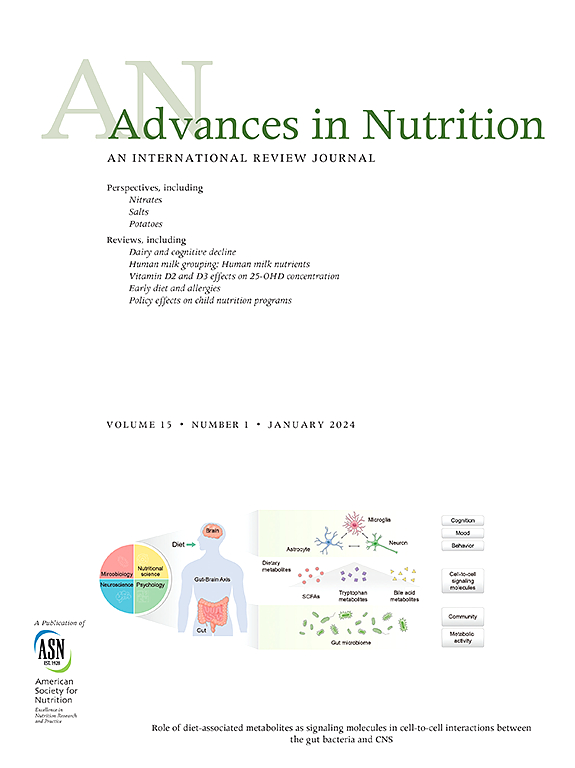透视:在人群贫血调查中使用单滴毛细管血液测量血红蛋白浓度的新证据和关键问题。
IF 8
1区 医学
Q1 NUTRITION & DIETETICS
引用次数: 0
摘要
准确、精确地测量血红蛋白浓度对于可靠地估算人群贫血患病率至关重要。如果在血红蛋白测量中引入了系统误差和/或随机误差,贫血患病率的估算值就可能出现严重错误,从而限制了其实用性。几十年来,单滴毛细管血一直是调查中测量血红蛋白浓度最常用的血源,尤其是在中低收入国家。在此,我们强调了历史和新出现的证据,即单滴毛细管血液会给血红蛋白估计值带来很大的随机误差(变异性),从而导致对人群贫血患病率的估计不够可靠。目前,最佳做法是按照标准操作程序和质量保证措施,使用自动血液分析仪采集和使用静脉血测量血红蛋白。如果无法使用自动分析仪,则应考虑由训练有素的抽血员或标本采集员使用护理点血红蛋白仪分析静脉血。即将进行的系统综述将为单滴毛细管血进行血红蛋白评估的准确性和精确性提供更多证据。与此同时,我们建议在使用单滴毛细管血液测量血红蛋白时要谨慎,因为这会导致血红蛋白估计值不准确,贫血患病率估计值也不可靠。本文章由计算机程序翻译,如有差异,请以英文原文为准。
Emerging Evidence and Critical Issues with the Use of Single-Drop Capillary Blood for the Measurement of Hemoglobin Concentration in Population-Level Anemia Surveys
Accurate and precise measurement of hemoglobin concentration is critical for reliable estimations of anemia prevalence at the population level. When systematic and/or random error are introduced in hemoglobin measurement, estimates of anemia prevalence might be significantly erroneous and, hence, limit their usefulness. For decades, single-drop capillary blood has been the most common blood source used for the measurement of hemoglobin concentration in surveys, especially in low-income and middle-income countries. In this study, we highlight historical and emerging evidence that single-drop capillary blood introduces a high degree of random error (variability) to hemoglobin estimates, leading to less reliable estimates of anemia prevalence at the population level. At present, the best practice is to collect and use venous blood for measurement of hemoglobin with an automated hematology analyzer, following standard operating procedures and quality assurance measures. Where use of an automated analyzer is not possible, the analysis of venous blood in a point-of-care hemoglobinometer by trained phlebotomists or specimen collectors should be considered. A forthcoming systematic review will provide additional evidence on the accuracy and precision of single-drop capillary blood for hemoglobin assessment. In the meantime, we raise caution when using single-drop capillary blood for hemoglobin measurement as it can result in inaccurate hemoglobin estimates and less reliable anemia prevalence estimates.
求助全文
通过发布文献求助,成功后即可免费获取论文全文。
去求助
来源期刊

Advances in Nutrition
医学-营养学
CiteScore
17.40
自引率
2.20%
发文量
117
审稿时长
56 days
期刊介绍:
Advances in Nutrition (AN/Adv Nutr) publishes focused reviews on pivotal findings and recent research across all domains relevant to nutritional scientists and biomedical researchers. This encompasses nutrition-related research spanning biochemical, molecular, and genetic studies using experimental animal models, domestic animals, and human subjects. The journal also emphasizes clinical nutrition, epidemiology and public health, and nutrition education. Review articles concentrate on recent progress rather than broad historical developments.
In addition to review articles, AN includes Perspectives, Letters to the Editor, and supplements. Supplement proposals require pre-approval by the editor before submission. The journal features reports and position papers from the American Society for Nutrition, summaries of major government and foundation reports, and Nutrient Information briefs providing crucial details about dietary requirements, food sources, deficiencies, and other essential nutrient information. All submissions with scientific content undergo peer review by the Editors or their designees prior to acceptance for publication.
 求助内容:
求助内容: 应助结果提醒方式:
应助结果提醒方式:


